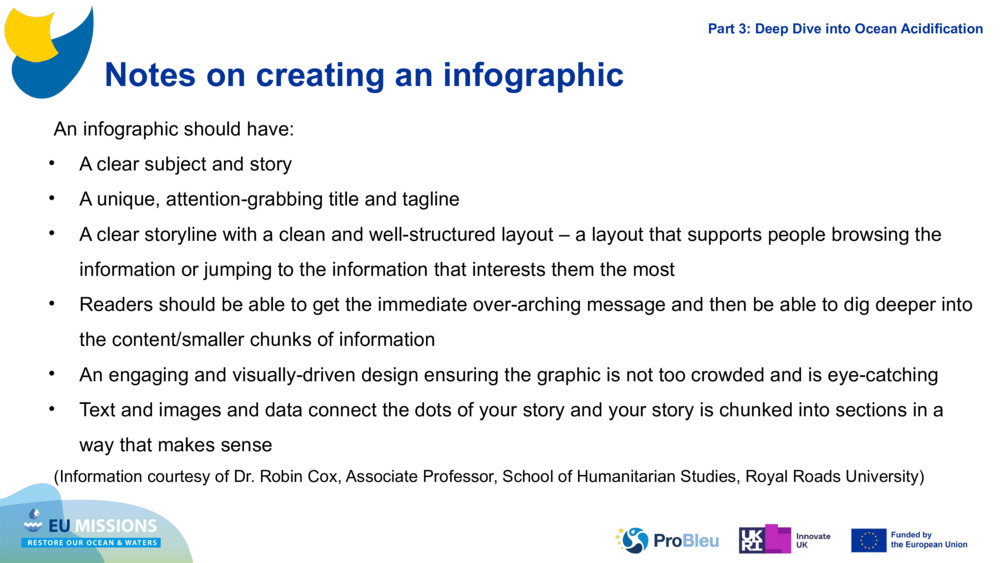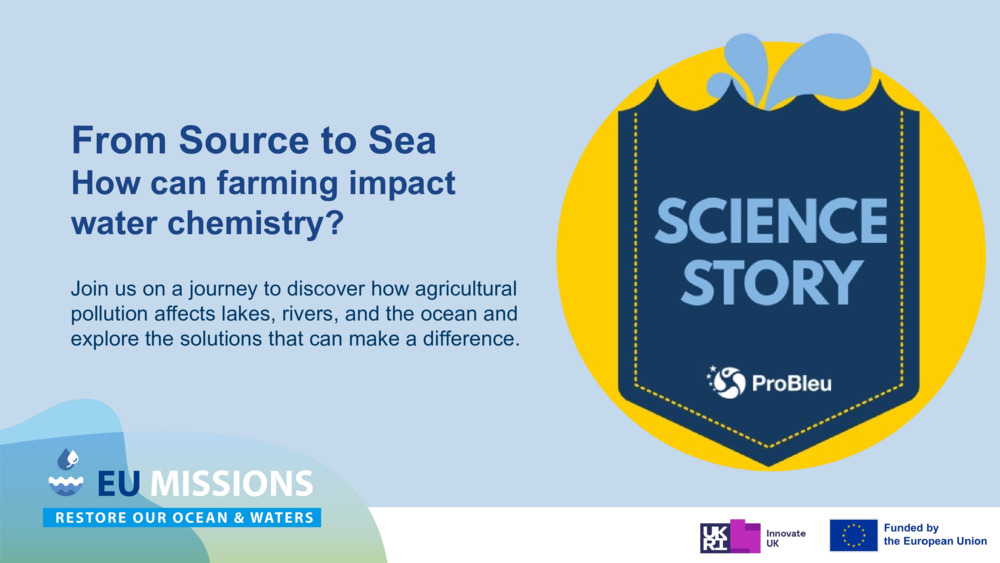Notes on creating an infographic
Notes on creating an infographic
Notes on creating an infographic An infographic should have: A clear subject and story A unique, attention-grabbing title and tagline A clear storyline with a clean and well-structured layout – a layout that supports people browsing the information or jumping to the information that interests them the most Readers should be able to get the immediate over-arching message and then be able to dig deeper into the content/smaller chunks of information An engaging and visually-driven design ensuring the graphic is not too crowded and is eye-catching Text and images and data connect the dots of your story and your story is chunked into sections in a way that makes sense (Information courtesy of Dr. Robin Cox, Associate Professor, School of Humanitarian Studies, Royal Roads University) Part 3: Deep Dive into Ocean Acidification

Original Slide Deck: Water Chemistry with Plymouth Marine Laboratory
Topics: Sustainable Resources. Deoxygenation. Ocean. Freshwater. Ocean Chemistry. Nutrient Pollution.
Suitable Ages: 12. 13. 14. 15. 16. 17. 18.
Keywords: Acidity. Alkalinity. Biology. Carbon. Carbon Dioxide. Chemical Reactions. Chemistry. Eutrophication. Farming. Hypoxia. Indicators. Molecules. Nutrients. Ocean Acidification. Ph.
Uploaded By: pml-admin
Number of bundles using this content: 1
Licensed under CC BY 4.0
This content has been used in the following resource bundles:
Water Chemistry with Plymouth Marine Laboratory
Teaching about water chemistry is important because it connects key sc...
View Science Story